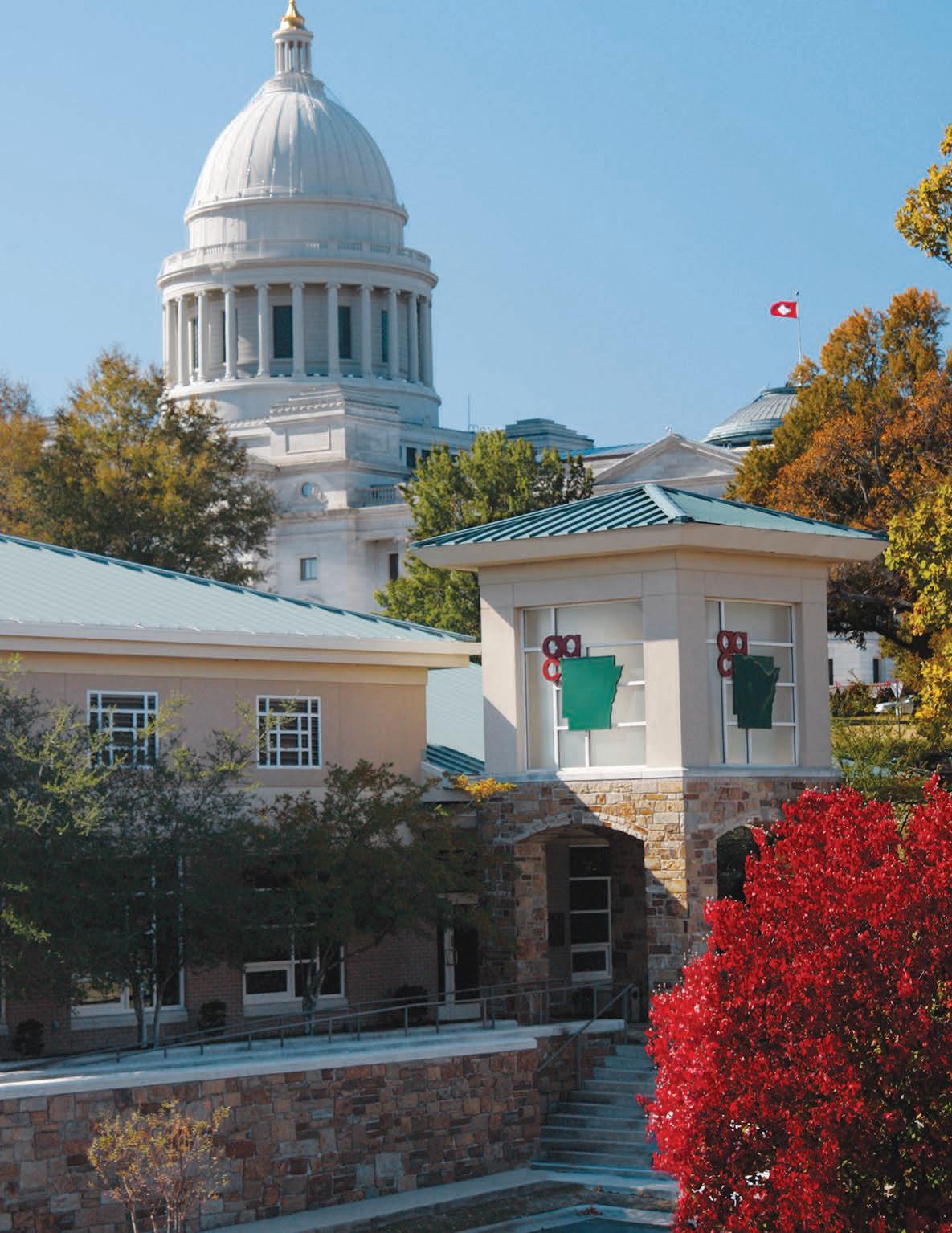
7 minute read
Preserving History
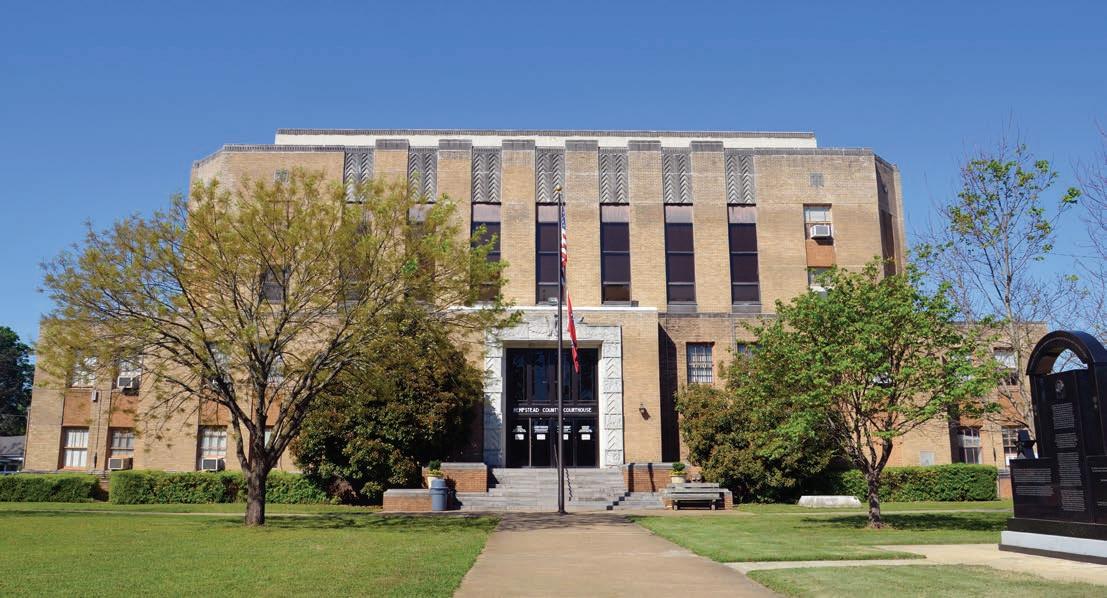
Above: The 1939 Hempstead County Courthouse, which has served its constituents for 80 years, stands a symbol of Hope’s historic drive to become the county seat. Below right: The building is a marvel of Art Deco architecture that features a raised detail around the front doors.
Hempstead County is unique in that it still holds all three of its historic courthouses.
Story by Mark Christ s Photos by Holly Hope Arkansas Historic Preservation Program
The history of Arkansas’ county courthouses is rife with tales of disastrous fires claiming the seats of government, or of older structures being replaced as the needs of the county outgrew the space available. It is somewhat amazing, then, that Hempstead County still holds all three of its historic county courthouses.
Hempstead County was created before Arkansas even became a territory when the Missouri territorial legislature carved Hempstead, Clark and Pulaski counties from Arkansas County in late 1818. Court was first held at the home of John English, about eight miles north of Washington, but by 1825 it had moved to the small town on the Southwest Trail. For a decade, court met in a small frame building that Tilman L. Patterson had built, but its size forced county officials to rent rooms from local businessmen any time a grand jury was held. In 1835, the decision was made to construct a new and larger courthouse.
Patterson supervised the construction of a two-story, wood-frame building, which cost the county $1,850, plus $300 that went to William H.
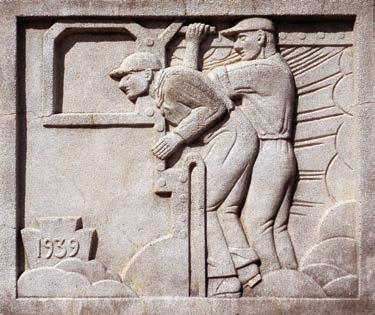

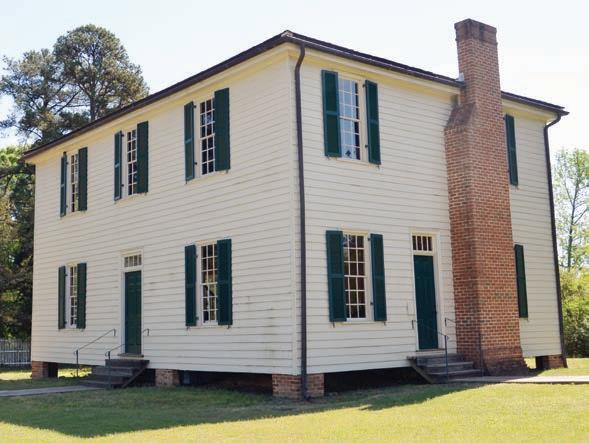
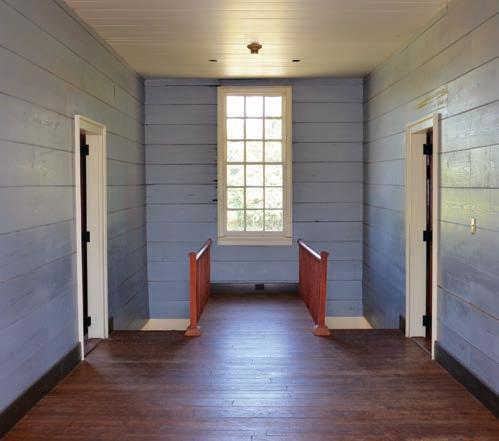
Left: Construction of this Hempstead County Courthouse, supervised by Tilman L. Patterson was completed in 1836. The two-story, woodframe building, which cost less than $2,000, was located in Washington, Ark., the former Hempstead County seat. Right: The 1836 courthouse featured a courtroom on the first floor and offices on the second floor. The courthouse became the Confederate State Capitol in 1863.
Whitson for building and installing shutters. Completed in 1836, the Hempstead County Courthouse held a courtroom on the first floor, while county officials had offices on the second floor, which also featured meeting space for Mount Horeb Lodge No. 4, Free and Accepted Masons. A separate building was constructed for the county clerk, and records were kept there.
The courthouse became the Confederate State Capitol after Union forces took Little Rock on Sept. 10, 1863, and served in that capacity until the war ended in mid1865, after which the Twelfth Michigan Infantry Regiment used it as a jail during its post-war occupation of Washington. When a new courthouse was built in 1874, the county sold the 1836 building to the Washington Male and Female Academy for $1,375, and it was used as a school until a new brick school was erected in 1914. The old courthouse slowly deteriorated until 1928 when the United Daughters of the Confederacy successfully lobbied the state General Assembly for $5,000 to rehabilitate the building — the first money ever appropriated for a historic preservation project. It was used as a museum, and in 1973 became part of Old Washington State Park (now Historic Washington State Park). In the mid-1990s, the Arkansas Department of Parks and Tourism restored the first Hempstead County Courthouse to its 1836 appearance, as it continues to welcome visitors more than 180 years after its construction.
As mentioned earlier, Hempstead County leaders had decided by the 1870s that a new courthouse was needed. In June 1872, County Judge George H. Martin ordered $50,000 appropriated for construction of a new courthouse and jail in Washington. The county hired Green & Son, a Little Rock architectural firm, to design the new building. The result was a gorgeous example of Italianatestyle architecture, with tall, narrow windows topped by heavy hood molding, brackets in the eaves, and a cupola with a mansard roof providing a Second Empire-style influence. Ezekiel Treadway was the low bidder for the courthouse project at $18,650. After completing the new jail in 1874, Treadway tackled the courthouse, which was completed by early 1875, though costs had risen to $21,454.34.
Even as the new courthouse was completed and put into service, a new town called Hope was developing along the Cairo and Fulton Railroad. In 1878, an election was held to decide whether the new railroad town should serve as the county seat. Hope lost that election, as it did other county seat elections in 1882, 1910 and 1914. In April 1838, the city of Hope accepted title to the old Garland School and offered the site as a location for a new courthouse. A June 11, 1938, election resulted in Hope finally winning the county seat, and the Arkansas Supreme Court upheld the results on May 11, 1939. The stately 1874 Hempstead County Courthouse was turned over to the Washington School District, which later sold it to the Arkansas Department of Parks and Tourism for $10,000. The Italianate-style icon now serves as the visitor center for Historic Washington State Park.

Courthouse
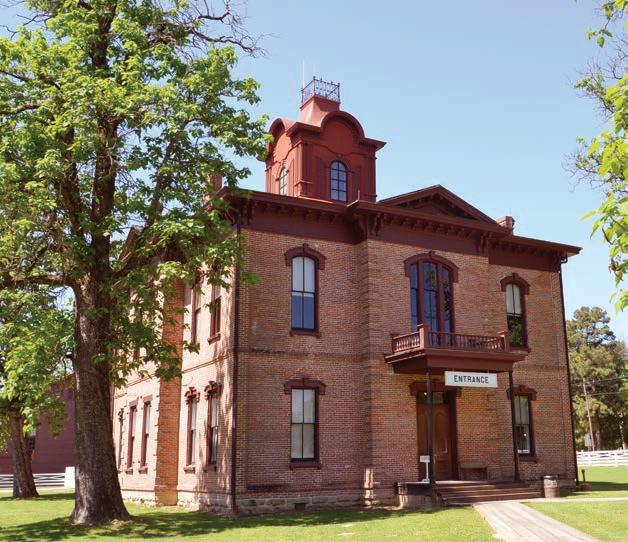
Left: In 1872, the Hempstead County judge ordered money appropriated for a new courthouse. This building was completed in 1874 at a cost of less than $22,000. Right: The 1874 courthouse, an example of Italianate-style architecture, featured an upstairs courtroom. The building eventually was sold to the Arkansas Department of Parks and Tourism. It now serves as the visitor center for Historic Washington State Park.
Continued From Page 33 <<<
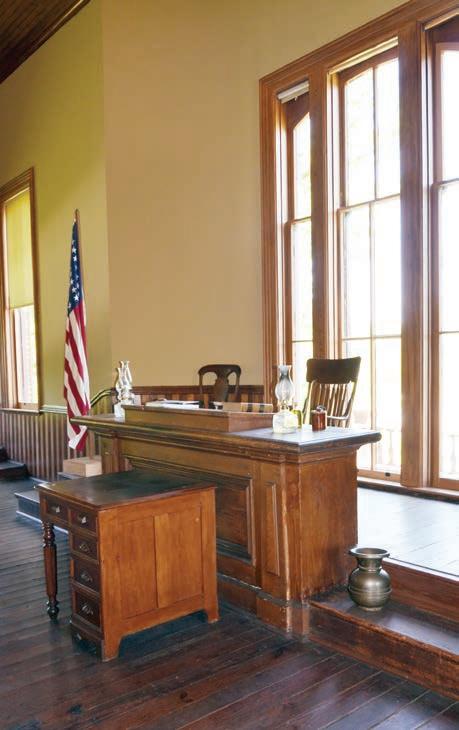
Even as the county seat case worked its way through the Arkansas court system, the people of Hope made plans for a new courthouse in the railroad town. Hope Mayor Albert Graves visited Washington, D.C., to lobby for a grant from the Public Works Administration, one of President Franklin D. Roosevelt’s New Deal programs, an effort that on Dec. 14, 1938, resulted in a $95,400 grant for the $198,450 project. An election was held on Nov. 8, 1938, and Hempstead County voters overwhelmingly approved construction and funding of the new building. The Grand Lodge of Arkansas laid the cornerstone on Nov. 29, 1939, continuing a century of Masonic partnership with Hempstead County’s courthouses. Construction was complete by April 30, 1940, and the first court sessions were held in the new building on May 13.
Little Rock’s McAninch and Anderson architectural firm designed the building, creating an imposing Art Deco-style monolith. In addition to the vertical emphasis typical of the style, the four-story Hempstead County Courthouse features stylized geometric details along its front façade as well as cast-concrete figurative panels flanking the front door displaying both classical themes and modern scenes of agriculture and industry; a stylized eagle serves as a lintel for the door. The interior features marble steps and wainscoting and decorative tile floors.
The 1939 Hempstead County Courthouse has served its constituents faithfully for nearly 80 years, and in 2016 the Arkansas Historic Preservation Program awarded the county a $16,465 County Courthouse Restoration Grant, funded through the Arkansas Natural and Cultural Resources Council, to prepare a master plan for the building’s preservation. However, the Hempstead County Quorum Court voted on Feb. 23, 2017, to purchase the former Farmer’s Bank Building in downtown Hope to serve as a new home for county government operations. The ultimate fate of the Hempstead County Courthouse, a symbol of Hope’s historic drive to become the county seat and a marvel of Art Deco architecture, remains unknown.
AAC f amily & f riendsAAC C onferen C e Association of Arkansas » » » » » » » » » » » » » » » » » » » » » » » » » » » » » » » » » » » » » » » » » » » » » » » » » » » » » » » » » » » » » » » » » » » » » » » » » » » »
Counties W hen you participate in the AAC Workers’ Compensation Trust, you Workers’ Compensation Trust can relax in the hands of professional staff members who are going to take care of your needs. The AAC team has decades of experience in handling county government claims – they’re simply the best at what they do! Did we mention that participants in our plan are accustomed to getting money back? Since we started paying dividends in 1997, the AAC Workers’ Compensation Trust has declared almost $26 MILLION dollars in dividends, payable to members of the fund. In fact, we mailed $1,000,000 in savings back to member counties in August 2014. The service is available for any size county government and other county government-related entities. We’ve got you covered!
Members enjoy dividends! $26 Million paid since 1997
